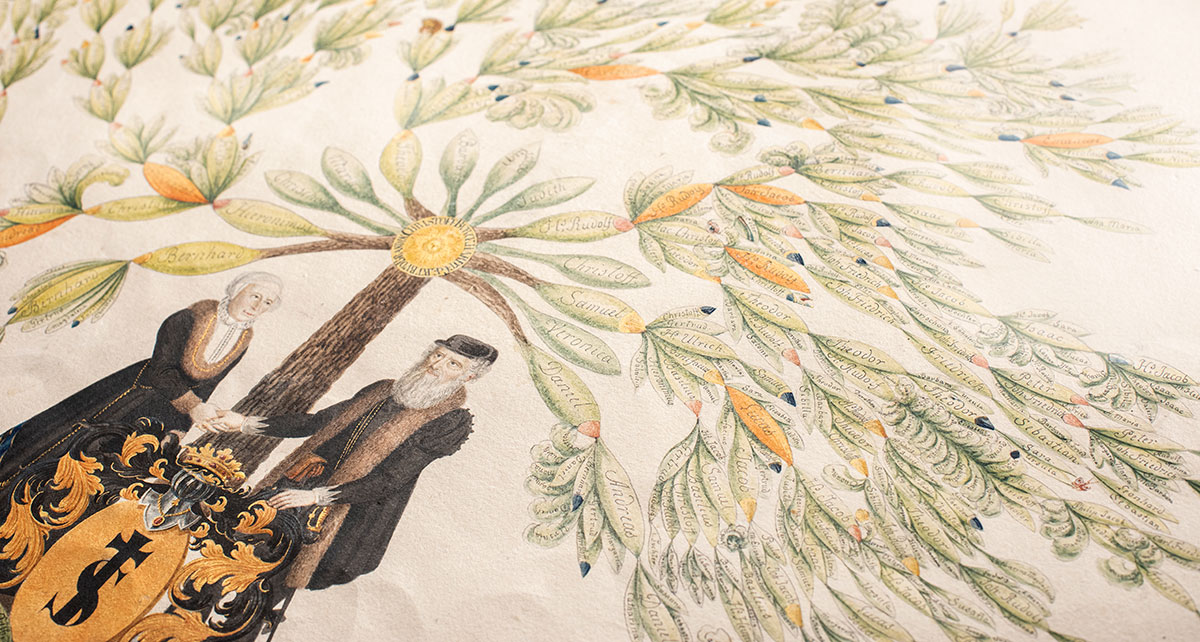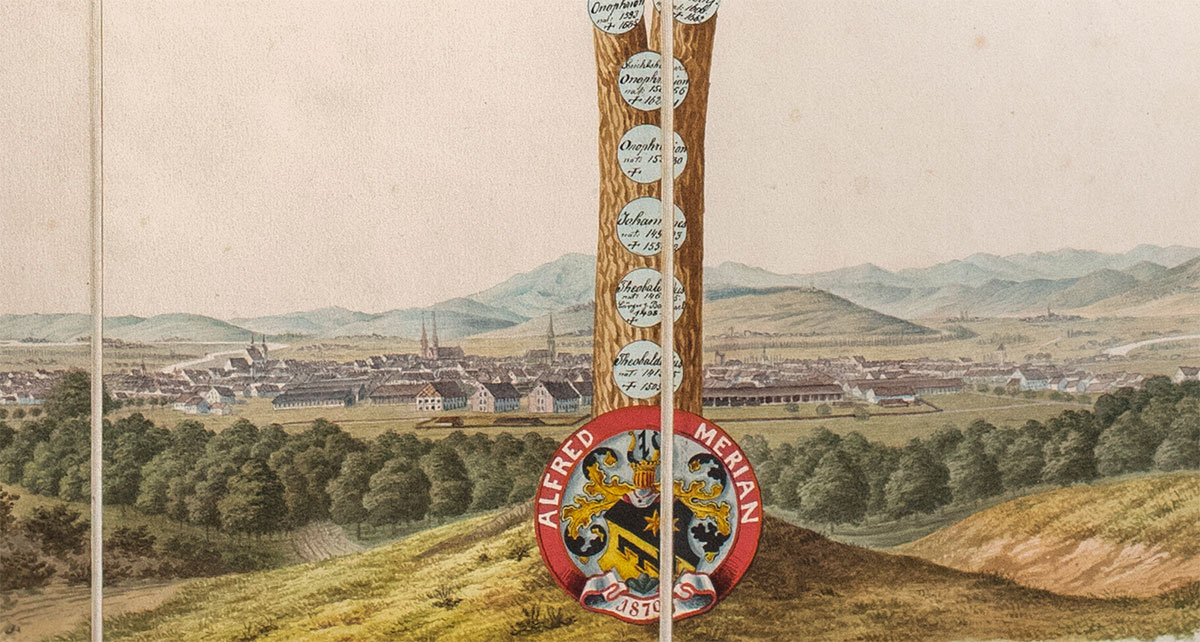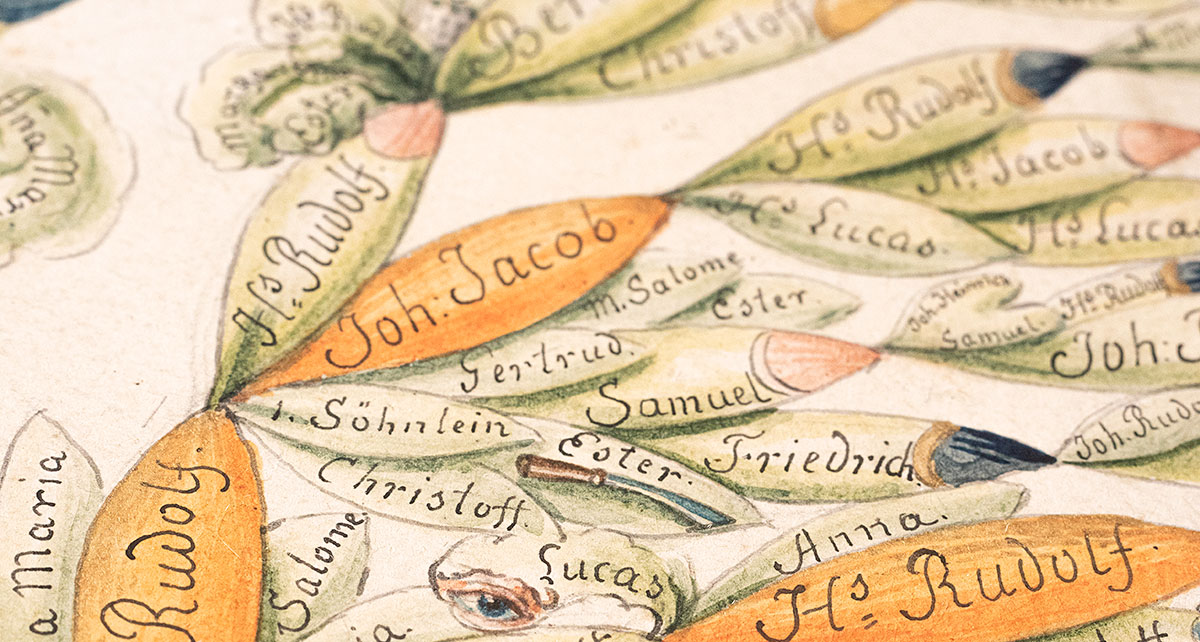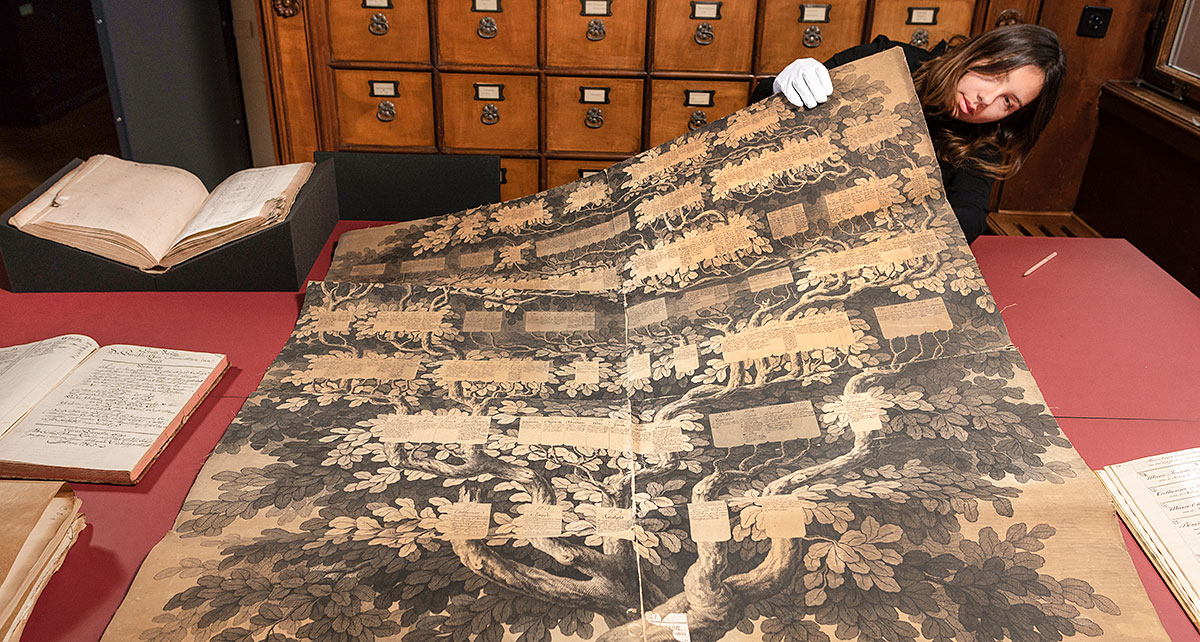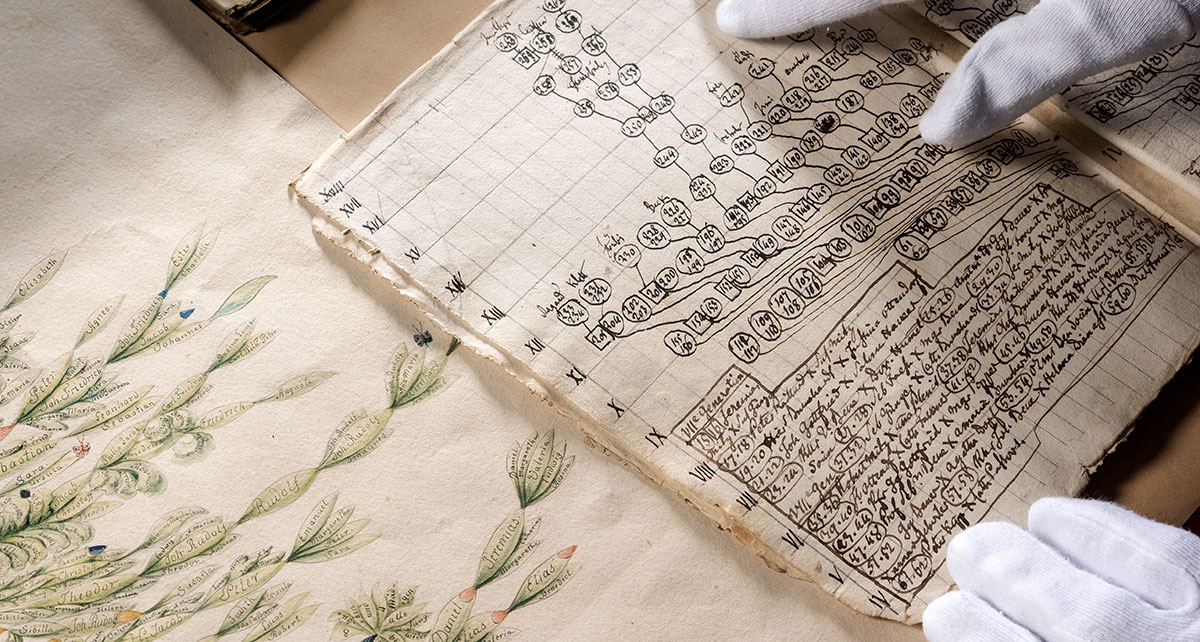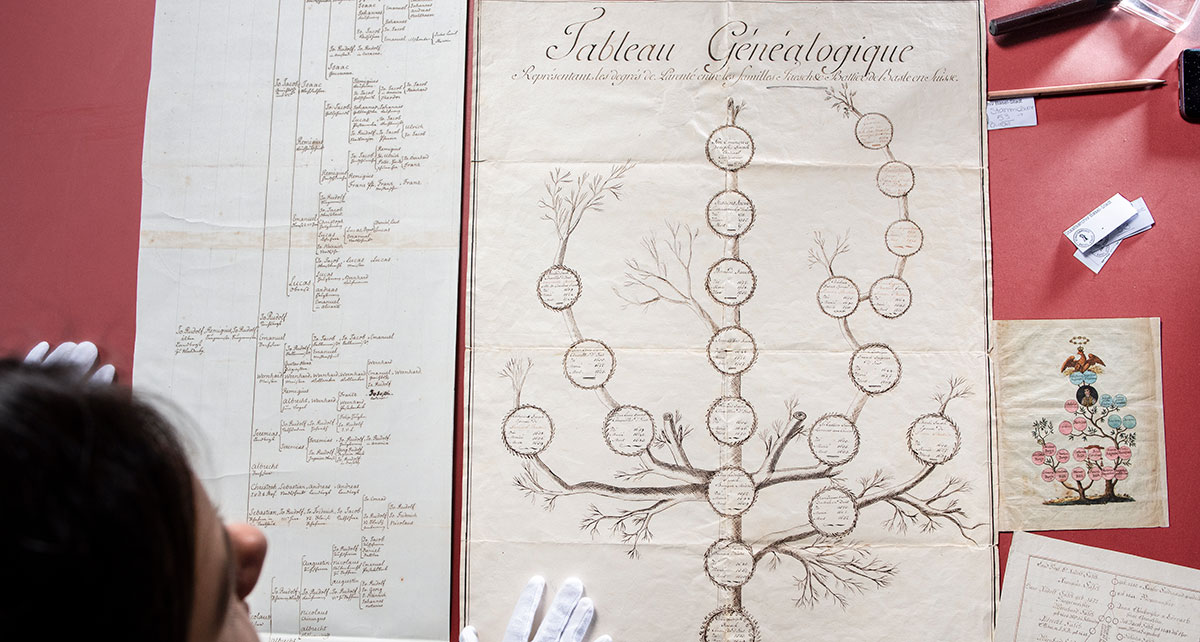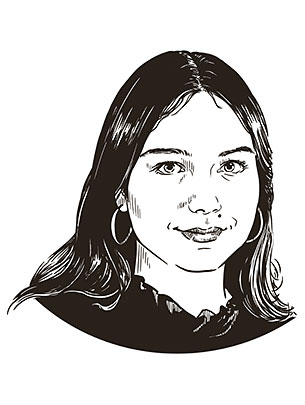Trees of relationships.
Text: Reto Caluori
At its base stands the ancestral couple. From there, the tree rises upward, gradually branching out over successive generations and presenting the picture of a thriving lineage. The family tree is a genealogical diagram that was popular in bourgeois families during the 18th and 19th centuries – and retains its appeal up to the present day.
Family trees, whether they be naturalistic, tree-like or abstract in form, suggest that a family can be depicted as a clearly structured web of relationships. Yet since every family tree shows only one of many possible family constellations, it does more than just portray relatedness – it actively produces it.
For the viewer, the time-consuming genealogical spadework involved and the large amounts of data that have to be collated before a detailed diagram can be drawn up remain invisible. So, too, do the decisions about which possible family members ultimately to include in the family tree.
Sources held at the Basel public records office can shed light on these aspects of genealogical practice, however. The historian Fiona Vicent is investigating how local bourgeois families collected and organized genealogical data during the 18th and 19th centuries, what theories and techniques informed this activity, and how the family trees were used.
Fiona Vicent is a doctoral student at the Department of History and a research assistant for the Sinergia project In the Shadow of the Tree: The Diagrammatics of Relatedness as Scientific, Scholarly, and Popular Practice. This project, funded by the Swiss National Science Foundation, is investigating the wide range of diagrams that have been used since the Middle Ages to conceptualize kinship and descent.
More articles in the current issue of UNI NOVA.

